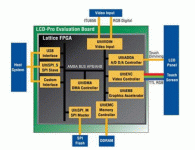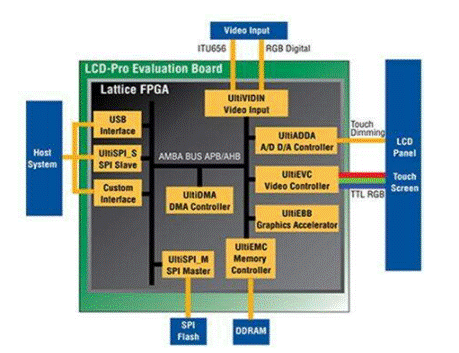
How to use FPGA’s embedded display control application
“Graphical LCD displays are increasingly designed for demanding embedded Display control and video applications such as those used in industrial consoles, vending machines, automotive and marine dashboard clusters, home appliances, medical equipment, and gaming consoles Machine Interface (HMI). A key requirement for efficient controller design is efficient solution scaling and optimization of cost and performance. Designers often need to integrate third-party display control solutions into their designs, which requires IP that is robust and easy to interface with the designer’s own IP blocks and processors.
“
Graphical LCD displays are increasingly designed for demanding embedded display control and video applications such as those used in industrial consoles, vending machines, automotive and marine dashboard clusters, home appliances, medical equipment, and gaming consoles Machine Interface (HMI). A key requirement for efficient controller design is efficient solution scaling and optimization of cost and performance. Designers often need to integrate third-party display control solutions into their designs, which requires IP that is robust and easy to interface with the designer’s own IP blocks and processors.
System designers are turning to programmable logic devices such as FPGAs to implement advanced LCD graphics solutions in their designs to support multiple display and processor types and respond to changing market standards within a compressed window of opportunity and request
Flexibility and Prevention of Obsolescence
Applications rely on the high-bandwidth framebuffer memory controller to support external memory devices for framebuffer storage. Programmable logic allows the implementation of powerful memory controllers for different types of memory, protecting manufacturers’ investments in FPGA platforms. Processor obsolescence is another area where programmable logic offers significant investment protection. The flexibility of the FPGA allows the processor to be interfaced via USB, SPI, or a custom interface, allowing the processor to be easily replaced or integrated into the designer’s choice of processor.

Figure 1 illustrates a typical embedded display control device implemented in an FPGA. The embedded display control device (FPGA in this case) communicates with the host system or processor for control tasks and with the touch screen LCD panel for display output. It interfaces with DDR memory for display page storage and refresh, and interfaces with video input streams for real-time external video overlay. The host system monitors the status and issues commands to the FPGA. The FPGA implements functions such as video control, graphics acceleration, touch screen interface control, video input scaling, cropping and positioning, and peripheral expansion through SPI.
Reasons for choosing an FPGA implementation
In this case, manufacturers use the Lattice LCD-Pro evaluation kit and its FPGA-based plug-in reference design example to quickly develop their own SPI drivers to manage graphics peripherals. The video controller is used to drive low cost TFT 16:9 ratio 480×272 pixels. The A/D, D/A Controller IP is used to interface with a low-cost 4-wire analog resistive touch screen. Embedded NOR Flash is used to store bitmap application pictures and frames. The SPI Slave IP creates a low-cost interface between an FPGA-based video platform and an embedded microcontroller. An FPGA-based enhanced graphics accelerator is used for BitBlt sprites and text to render bitmaps at different locations on the screen. BitBlt technology is also used to create embedded bitmap animations for advertisements.
Embedded display applications need to support multiple displays and processors while meeting long device lifecycles in industrial, automotive, and vending machine environments. Designers often require product lines to expand from ultra-low cost to high-end HMI applications. Programmable logic provides the flexibility and computing power needed to render the high-performance graphics required for complex embedded display control applications without relying on expensive processors and software. Modularity and configuration options enable efficient solution expansion and optimization for cost or performance.
The Links: G150X1-L01 FX3G-2AD-BD


